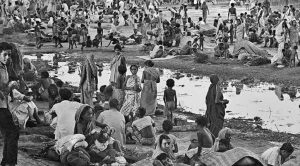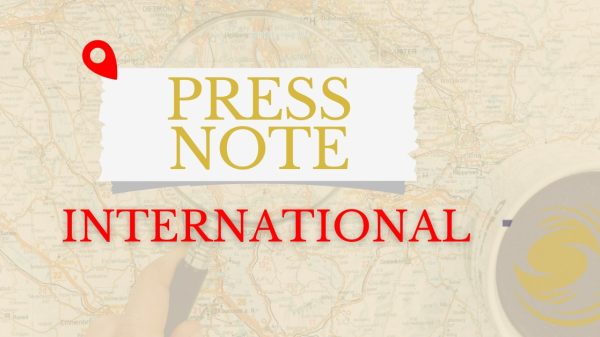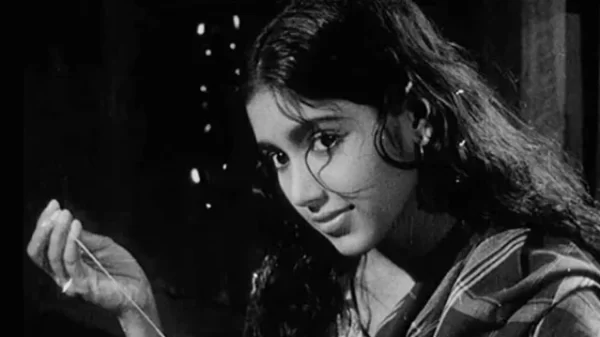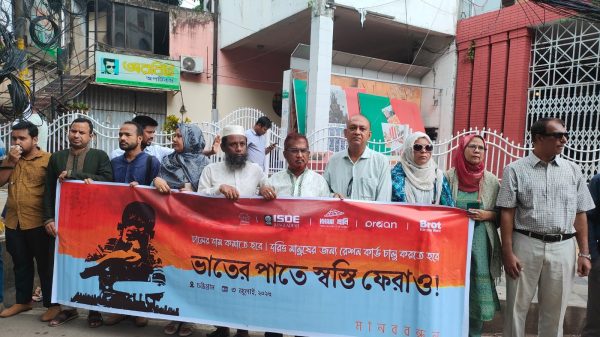Strategic Patience: The Art of Choosing When to Act

- Update Time : Friday, March 7, 2025

By April 1971, the government of East Pakistan had not yet fully established its private militia. However, an unwritten directive had been issued: persecution, murder, and looting of Hindus and Awami League supporters were deemed legal. This marked the beginning of widespread looting and killings. As a result, people started fleeing in droves toward the Indian border. Some left their homes and sought relatively safer areas with their families.
Lingering Memories of a Painful Past
Even though this event occurred 55 years ago, the scenes from that time still linger in the memories of many people in this country. Houses of Hindus and Awami League members were being set on fire across various regions. At that time, a significant portion of the Hindu community was ideologically left-leaning, while another segment was involved with the Congress Party. However, in the 1970 national elections, for the first time, a large number of Hindus voted for the Awami League. They believed that if Sheikh Mujibur Rahman’s Awami League came to power, they would not have to seek refuge in the poverty-stricken West Bengal of India as refugees. The people of East Bengal were accustomed to a relatively comfortable lifestyle, and the prospect of the arduous labor required in Kolkata and West Bengal filled them with fear. Therefore, despite many challenges, they remained in their homeland. In this situation, they found hope in Sheikh Mujibur Rahman. He appeared to be a courageous and honest leader capable of ensuring everyone’s security.
However, their decision to vote for the Awami League made them targets of the Pakistan government’s private militia. Facing relentless attacks, looting, and, above all, the need to protect the honor of their women, they had no choice but to flee toward the Indian border.

The Mass Exodus and Refugee Experience
Starting in April 1971, nearly ten million people—many of them Hindus—began seeking refuge in different camps across India. This mass exodus continued until November of that year.
At that time, there was no organized system for directing refugees to specific camps. People fled in different directions without clear destinations. Even after reaching the refugee camps, no one could set aside their concerns for their homeland and their loved ones. There were no mobile phones, WhatsApp, or any other modern communication tools. The only means of contact was through letters, but postal communication with Pakistan was completely severed. Because of this, a regular activity for many refugees involved walking several miles or taking a bus to the border (in India, those identified as “Joy Bangla” supporters were often not charged fares on buses or trains). They did this in the hope of receiving news about their homeland from newly arrived refugees.
Horrors of the Private Militias
The news they gathered from new arrivals was often similar in nature. They heard that the police were largely powerless, Pakistani soldiers did not patrol regularly, and the military itself was not heavily involved in looting. Instead, the bulk of the looting, arson, and sexual violence was being carried out by the government-backed private militias. Free-thinking intellectuals were living in fear of death and arrest.
Meanwhile, reports started emerging that members of East Pakistan’s Malek cabinet were increasingly being drawn from the ranks of these looters and militia leaders. Refugees who had recently escaped from East Pakistan shared horrifying stories: they had seen the bodies of young girls, raped and murdered, abandoned in rice fields. Some said they had refused to leave their homes, but their neighbor’s daughter had gone to the store to buy tea and sugar—only to be abducted, raped, and killed by members of the government’s private militia. Others described how they had fled after their neighbors’ houses—such as Mahendra Babu’s home or that of Awami League leader Nuruzzaman—had been set on fire.

These crimes were not committed by the regular army but by the private militias of the East Pakistan government. Across every city and neighborhood, local thugs and delinquent youths had taken control. They were now the ultimate authorities, ruling with unchecked power.
By that time, the leaders of the Awami League, NAP (Bhasani), NAP (Mozaffar), Congress, and the Communist Party had taken refuge in India. The Mujibnagar government had been formed. A collective demand arose for the Indian government, particularly its Prime Minister, Indira Gandhi, to take immediate action in recognizing this government and for India to directly intervene in liberating Bangladesh.
India’s Response and the Refugees’ Dilemma
However, over time, people started to feel disheartened. Despite India providing aid to refugees and supporting those seeking liberation, it remained completely silent on the political matters of Bangladesh. The official stance of the Indian government was that India, as a democratic state, believed democracy had been disrupted in East Pakistan and that the situation there was unstable. India advocated for the establishment of a democratic government and expressed its willingness to work with such a government.
On the other hand, service-oriented organizations such as Bharat Sevashram and Rashtriya Swayamsevak Sangh—which had been helping the refugees from the beginning—kept insisting that Hindus in East Pakistan were being persecuted and their properties looted.
Yet, within the refugee camps, the leaders of Bangladesh—both those within the Mujibnagar government and those outside it—grew increasingly frustrated with Indira Gandhi’s limited approach of only advocating for “democracy” and “working with a democratic government.” The frustration was exacerbated by the fact that Gandhi herself never publicly stated this position—it was conveyed only through her administration. As a result, confidence in her leadership eroded among the Hindu refugees in the camps and even among many elected Awami League representatives.
Moreover, unlike today, India at that time was neither economically nor militarily strong. The only global power India possessed was “soft power”—its reputation as a peace-loving nation where democracy was deeply institutionalized and where no unconstitutional or illegal government had ever seized power. Indira Gandhi was a strong leader, but she never explicitly mentioned Bangladesh’s independence or the recognition of Bangladesh. However, the Mujibnagar government leaders were given the “highest honor” and “security” in India.

The Refugees Lose Faith
One day, during a family discussion, I learned that during a conversation with “ Bangla Congress” leader Ajay Mukherjee, NAP leader Professor Mozaffar Ahmed remarked that many Awami League parliament members had lost faith in Indira Gandhi’s willingness to take decisive action. Meanwhile, the Malek cabinet in East Pakistan had gradually transformed its private militia into a type of paramilitary force. Plans were underway for a new election, with efforts to outlaw the Awami League. Trials of present and absent Awami League leaders had begun, and the regime aimed to establish a government through elections without the Awami League’s participation.
Thus, there was growing concern not only over Indira Gandhi’s silence but also over the fear that the fate of Bangladesh’s leaders might resemble that of Tibet’s Dalai Lama. However, Professor Mozaffar Ahmed countered this argument, saying that Tibet and Bangladesh were not the same. The internal strength of Bangladesh’s pro-liberation political forces and its people was vastly different from the political position of the Dalai Lama inside Tibet.
A Shift in the Refugee Camps
Not long after, the refugee camps saw a slight shift in mood. Amid the muddy, rain-soaked camps of the 1971 monsoon, discussions started among the educated refugees. The main topic of conversation was that Indira Gandhi had signed a twenty-year Indo-Soviet Treaty of Friendship and Cooperation. This strengthened her political standing significantly, and many hoped that she would now take decisive action.
But within a few days, this hope, too, was extinguished. Indira Gandhi remained silent. She spoke about world peace and voiced her opposition to war. Her administration repeated its previous stance: India wanted to work with a democratic government in Pakistan and would not associate itself with any undemocratic entity.
This deepened the sense of despair within the refugee camps. The same sentiment was echoed by those who managed to escape from what was then called the “prison camp” of Bangladesh. Liberation fighters who had carried out operations inside Bangladesh and then fled back to India reported that the people of Bangladesh were also becoming increasingly hopeless. In their view, the iron had already cooled down—there was no longer an opportunity to strike.
The Malek government had entrenched itself. It was not only supported by fundamentalist groups but also composed of fundamentalist ministers.

The Breaking Point
Later, I learned from war-time leaders that even politicians like Mizan Chowdhury and Obaidur Rahman had grown disheartened at the time. Meanwhile, the Pakistani government began reaching out to prominent Awami League leaders in various ways, offering them general amnesty in exchange for abandoning their political struggle. Camps were also set up to facilitate the return of refugees.
During this period of extreme despair, Indira Gandhi and her foreign minister traveled the world. Yet, they never once explicitly mentioned Bangladesh’s independence. The only argument they put forward was that the turmoil in Pakistan’s border regions was detrimental to India and that India sought the establishment of a democratic government in Pakistan.
Even in November, their stance remained unchanged. Reports from within occupied Bangladesh painted a bleak picture—widespread desperation had taken hold across the country. Meanwhile, within the refugee camps, many people began considering whether they could find ways to settle outside the camps permanently.

December 3: The Moment of Truth
Then came December 3. Indira Gandhi addressed a public rally in Kolkata. The gathering consisted largely of educated refugees rather than local West Bengalis. But even here, Gandhi made no mention of recognizing Bangladesh’s independence or its government. The refugees, wrapped in a dark shadow of disappointment, returned to their tents.
That very night, they heard over the radio: Pakistan had attacked India. India immediately responded by launching counterattacks, destroying thirteen air bases along Pakistan’s western border. In the east, the Mitra Bahini (Allied Forces) was formed, with General Jagjit Singh Aurora as its supreme commander.
From that moment, the situation began to change by the hour. The first country to officially recognize Bangladesh was the small, peace-loving nation of Bhutan. Then, Indira Gandhi addressed the Indian Parliament and declared official recognition of Bangladesh.
From that point on, each day felt like a new dawn.
The Iron Gets Hot
The despair that had gripped the refugee and prison camps started to dissipate rapidly. In refugee discussions, there was only one realization:
Indira Gandhi knew exactly when iron gets hot.
In other words, only the true General knows the precise moment to strike. We did not. We never realized the sheer magnitude of her strength.
Author:Swadesh Roy, National Award-winning journalist, Editor of Sarakhon, The Present World










Leave a Reply